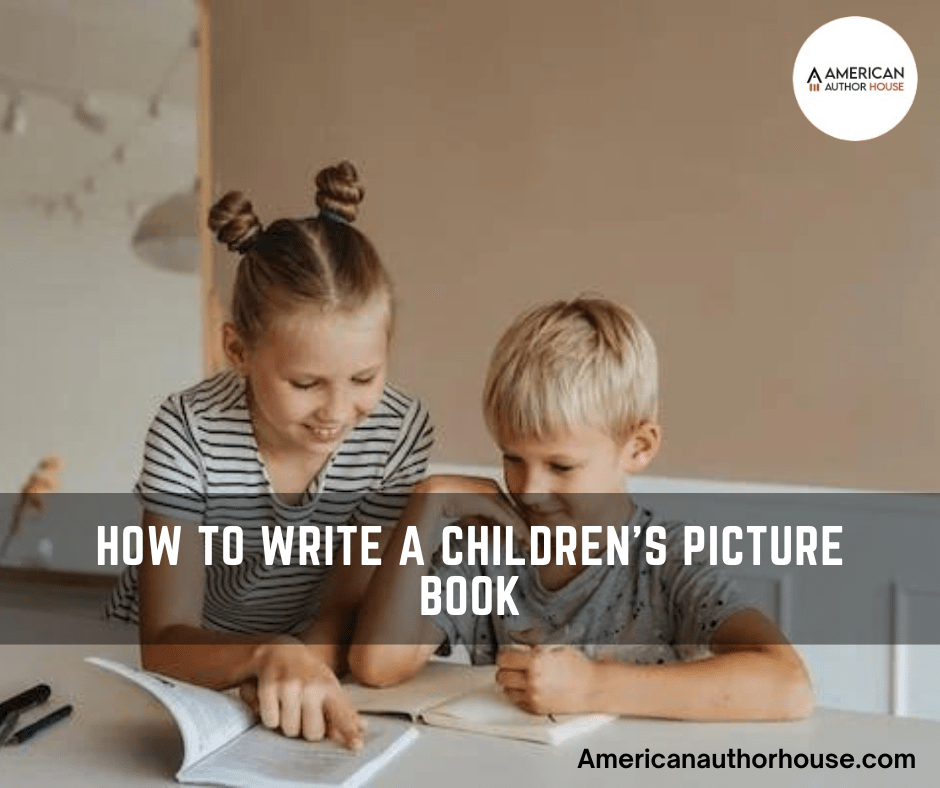
Writing
Introduction
Writing a children’s picture book is a fantastic opportunity to let your imagination run wild while capturing young readers’ attention. This handbook will give you essential ideas and tips to help you develop an engaging and memorable children’s picture book, regardless of whether you are an experienced writer or just beginning your authorial journey.
In this piece, we’ll look at developing an engaging picture book that will profoundly affect its audience and stay with them long after they finish reading it.
Understanding the Target Audience
Before beginning your journey as a writer, you must have a solid understanding of your intended readers. Therefore, children have several age groups, and each has a unique range of reading abilities and preferences. It is important to consider the age range and reading level of your intended audience because these factors will impact the difficulty level of your story’s plot, vocabulary, and themes.
Developing a Captivating Storyline
The narrative is the single most essential element of a quality picture book. It should be engaging, have a distinct beginning, middle, and end, and entice the reader to continue reading.
Develop an original concept that will pique the interest of young readers from the very first page and continue to hold that interest throughout the book. Check that the story has a solid lesson or moral to teach and is appropriate for the age range.
Creating Memorable Characters
So characters are what makes a picture book special. Make Character Development in Children’s Books that kids can identify with, root for, and feel an emotional link to. Give each of your characters their skills and weaknesses. Make them interesting, different, and like the world we live in.
Crafting Engaging Dialogue
Dialogue is very important in Children’s picture books because it brings the characters to life and moves the story. So keep the conversation simple, real, and right for the age group. Use words and sentences that are easy for children to understand and relate to. Think about adding conversation that will get kids and adults to talk to each other.
Incorporating Illustrations and Visual Appeal
Illustrations in children’s books serve to convey the plot to the reader. Collaborate with a seasoned artist, or try creating your own vibrant and engaging works of art. Ensure the images complement the text and add some visual interest to make reading more enjoyable. Use images to demonstrate emotions, actions, and key aspects of your tale.
Balancing Text and Images
Finding the appropriate balance between text and images is crucial in picture books. Don’t put too much text on each page, or young users may lose interest. Keep the text short, interesting, and spread out. Smartly use pictures to support the text and make it easier to read.
Choosing the Right Tone and Language
The tone of your children’s picture book should be appropriate for the audience you intend for it to attract. Maintain a tone that is cheery, energetic, and welcoming. Make sure that the language you use is appropriate for the age range that you are writing for. You might consider incorporating rhymes, repeated words, or catchy refrains that children can learn by heart or participate in.
Utilizing Simple Language and Short Sentences
Simplicity is key when writing for children. Use simple and easy language and short sentences to ensure clarity and ease of comprehension. Break down complex ideas into digestible and relatable concepts. Choose words that children are familiar with and introduce new vocabulary in a playful and accessible manner.
Enhancing Readability and Transition Words
To improve the readability of your picture book, use transition words and phrases to guide young readers through the story smoothly. Transition words like “first,” “next,” “then,” and “finally” help establish a clear sequence of events. They also make the reading experience more enjoyable and cohesive.
The Importance of Editing and Proofreading
Proofreading and editing are important parts of the writing process. Ensure your children’s picture book is error-free, uses correct grammar, and runs well. Check the text for uniformity, cohesion, and the right amount of pace. You could ask beta readers for comments or hire a professional editor to help you improve your manuscript.
Publishing and Marketing Your Book
Once you’ve perfected your picture book, it’s time to explore publishing options. Research publishers that specialize in children’s literature or consider self-publishing. American Author House, a renowned publishing company, offers excellent opportunities for aspiring children’s book authors. Develop a marketing strategy to promote your book, including online platforms, social media, and local events. Engage with your target audience and build connections within the literary community.
Engaging with Young Readers
Writing a picture book is fun because it lets you connect with young readers. Organize author trips to schools, libraries, or book clubs to interact directly with your audience. Share where the idea for your book came from, hold interactive events and encourage kids to use storytelling and writing to explore their creativity.
Main Attributes and Elaborate Information
| Step Number & Title | Description | Key Points to Remember |
|---|---|---|
| 1: Understanding the Target Audience | Understand the age group and reading level of your intended audience to tailor the story’s complexity and themes. | Age-appropriate content, reading level |
| 2: Developing a Captivating Storyline | Create a story with a clear beginning, middle, and end that engages young readers and teaches a lesson. | Engaging plot, moral lesson |
| 3: Creating Memorable Characters | Develop relatable characters with unique traits and weaknesses to connect with young readers. | Character development, emotional connection |
| 4: Crafting Engaging Dialogue | Write simple, age-appropriate dialogue that brings characters to life and encourages interaction between kids and adults. | Simple dialogue, interaction |
| 5: Incorporating Illustrations and Visual Appeal | Collaborate with artists or create your own illustrations to visually support the story and add interest. | Complementary illustrations, visual interest |
| 6: Balancing Text and Images | Find the right mix of text and illustrations to maintain young readers’ interest without overwhelming them. | Text-image balance, engaging layout |
| 7: Choosing the Right Tone and Language | Keep the tone cheerful and language age-appropriate, considering using rhymes and catchy phrases. | Appropriate tone, language for age group |
| 8: Utilizing Simple Language and Short Sentences | Use straightforward language and brief sentences for clarity and comprehension. | Simplicity, ease of understanding |
| 9: Enhancing Readability and Transition Words | Employ transition words to guide readers smoothly through the story and enhance readability. | Readability, clear sequence of events |
| 10: The Importance of Editing and Proofreading | Ensure the manuscript is error-free and flows well with consistent pacing and coherence. | Proofreading, editing for quality |
| 11: Publishing and Marketing Your Book | Research publishing options and develop a marketing strategy to promote your book effectively. | Publishing options, marketing strategies |
| 12: Engaging with Young Readers | Connect with your audience through author visits, interactive events, and encouraging storytelling and writing. | Audience engagement, interactive events |
Conclusion
Writing a children’s picture book is an exciting and rewarding endeavor. By understanding your target audience, developing a captivating storyline, creating memorable characters, and utilizing engaging language, you can craft a remarkable book that sparks imagination and leaves a lasting impression. Remember to edit, proofread, market your book effectively, and most importantly, enjoy sharing your creativity with young readers.
FAQ
Q1: How long should a children’s picture book be?
A1: Picture books typically range from 24 to 40 pages, including illustrations.
Q2: Can I self-publish my picture book?
A2: Yes, self-publishing offers authors more control over their work but requires additional marketing efforts.
Q3: Should I hire a professional illustrator?
A3: Hiring a professional illustrator can enhance the visual appeal of your book, but it’s not mandatory. Some authors choose to illustrate their work.



